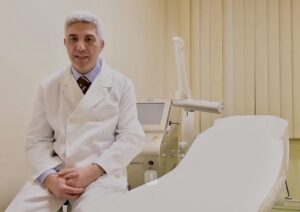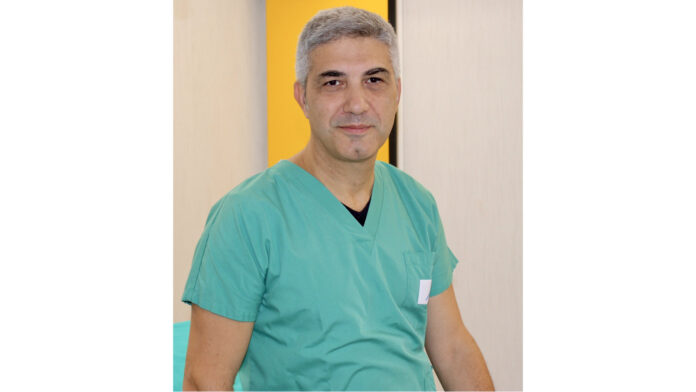Fairness Magazine & Dott. Maurizio Nudo
Macchie scure o ampie aree bianche sulla pelle, riconducibili a iper o ipopigmentazione, possono nascondere problemi congeniti o correlati a differenti patologie. Di norma esistono terapie che possono aiutare a migliorare il sintomo, risolutivi solo in pochi casi.
Da un lato l’aumento della pigmentazione, con la comparsa di macchie scure più o meno evidenti per dimensione e collocazione sulla cute, dall’altro la perdita fino alla mancata colorazione naturale della pelle. Sono i due “volti” dei disturbi della pigmentazione che spesso hanno come sede elitaria delle manifestazioni, proprio di viso e aree fotoesposte, con un importante impatto estetico e un disagio emotivo per chi ne è portatore. Alcuni trattamenti e terapie sono oggi possibili, nella gran parte migliorativi dei sintomi, ma solo in pochi (o rari) casi risolutivi del problema alla base. Fondamentale è un approccio clinico-terapeutico sartorializzato sulla causa e la tipologia di macchia iper/ipopigmentata.

Vitiligine
Fra i disturbi di ipopigmentazione è il più diffuso: colpisce circa l’1% della popolazione mondiale senza differenze di sesso o di etnia, pari a circa 70-100 milioni di casi, 700 mila-1 milione solo in Italia. Sono due le criticità principali che correlano a questa patologia caratterizzata dalla presenza di chiazze di colore bianco, lattiginoso, in aree fotoesposte, in prevalenza mani, piedi, gambe e volto, prive di melanina: l’eziologia, da un lato, su cui ancora si discute e la mancanza di una terapia risolutiva dall’altro. «La vitiligine – spiega il dottor Maurizio Nudo, Responsabile dermatologia Humanitas Castelli di Bergamo – è la “regina” delle discromie, una condizione in cui le stesse cellule dell’organismo attaccano i melanociti distruggendoli completamente inducendo la formazione di aree bianche sull’estensione della cute. Tuttavia la causa autoimmune è solo una delle ipotesi: esistono infatti forme di vitiligine idiopatica, da causa non nota, altre che si legano a patologie tiroidee, comorbidità cui più spesso si associa, di cui la più frequente è la tiroidite di Hashimoto, ma non strettamente dipendente. Esistono infatti pazienti con forme di tiroidite che sviluppano vitiligine e altri che ne sono affetti, senza alcun coinvolgimento della ghiandola. Da cui l’indicazione in paziente con vitiligine all’esecuzione di specifici esami del sangue quali il dosaggio degli anticorpi anti tireoglobulina (anti-Tg), anti microsomiali, FT4, TSH che consentano di confermare o escludere la correlazione con problematiche della tiroide. Inoltre, si possono avere forme di vitiligine di origine traumatica: ad esempio vi è evidenza che docce frequenti e lo sfregamento continuo possono provocare, in persone soprattutto di pelle scure, nelle regioni del petto e del dorso, danni a carico del derma fino a produrre vere e proprie acromie traumatiche». La severità della vitiligine si stima con il ricorso alla luce di Wood: la luce viola emessa dalla lampada consente di valutarne il danno dermico o epidermico, nella maggior parte dei casi a livello della giunzione dermo-epidermica, e la colorazione lattescente che rappresenta una importante discriminante rispetto ad altre patologie da ipopigmentazione, mentre l’approccio terapeutico punta alla stimolazione della melanina con metodiche differenziate a seconda della stagionalità. «In inverno – dichiara l’esperto -è possibile ricorrere ai raggi UVB a banda stretta (312 nanometri) o al laser con eccimeri con la stessa lunghezza d’onda che stimolano il melanocita a produrre altri melanociti per favorire la pigmentazione delle chiazze bianche. In estate oltre all’esposizione al sole, in caso di forme molto diffuse è possibile far uso di furocumarine per via orale (capsule) assunte una paio d’ore prima dell’esposizione o, in alternativa, a Kellina al 4%, un preparato galenico topico, sempre a base di furanocumarine, da applicare mezz’ora prima dei bagni di sole seguita da una esposizione graduale: 5 minuti al primo giorno, aumentando di 5 minuti nei giorni successivi fino a un massimo di 60 minuti, soglia limite consigliata a chi soffre di vitiligine e che può essere mantenuta nel corso della vacanza, al fine di evitare possibili ustioni indotte proprio dai farmaci utilizzati. La terapia con furocumarine può iniziare da maggio-giugno fino a settembre, sfruttando il più possibile il periodo di esposizione, da effettuarsi preferibilmente al pomeriggio evitando possibili rischio da una eccessiva esposizione al sole».

L’aderenza e la costanza terapeutica danno buoni risultati, con qualche eccezione per mani e piedi, nel lungo termine (diversi anni) soprattutto se la vitiligine è diffusa, e con esiti migliori nelle forme localizzate o se trattata dagli esordi fin dall’età pediatrica o nei giovani-adulti. Gli esiti sono tuttavia variabili da persona a persona, fino a. casi di mancata risposta al trattamento».
Le ipopigmentazioni
Si associano principalmente a dermatosi che possono essere anche congenite. «Parliamo più tipicamente di forme di dermatite atopica – chiarisce Nudo – spesso accompagnate da eczemi localizzati in diversi distretti a seconda dell’età e che regredendo possono dare adito a fenomeni di ipopigmentare, nello specifico a pityriasis alba corporis o faciei. Si tratta di una condizione che interessa in genere viso, pieghe antecubitali (o pieghe flessorie degli arti superiori) o cavi poplitei in cui si formano macchie bianche, laddove erano presenti gli eczemi, più tipica dei bambini. Eczemi e prurito inducono i piccoli a grattarsi, grattandosi la cute subisce un danno e il trauma inibisce la produzione di melanina, da cui l’ipopigmentazione di norma transitoria. Queste macchie bianche sono spesso fonte di preoccupazione per i genitori che le scambiano erroneamente per funghi o vitiligine, essi vanno tranquillizzati sul fatto che con la crescita le manifestazioni tenderanno a scomparire, mentre potranno permanere nel tempo se la problematica insorge nell’adulto». Ancora una volta la lampada di Wood può aiutare a differenziare la diagnosi: il nocciola chiaro, tipico pityriasis alba, consentirà di escludere che si tratti di vitiligine.
Tra le ipopigmentazioni, piuttosto frequente è anche la pitiriasi versicolor dovuta al fungo Pityrosporum ovalis o Malassezia furfur che si localizza elettivamente sul viso ma anche su torace e dorso, generando la formazione di macchie color caffelatte o rosate desquamanti. «Il Pityrosporum ovalis – fa sapere il dermatologo – è un parassita presente sulla superficie della pelle di ciascuno che di norma permane allo stato parassitario, ma che in soggetti predisposti o in caso si generino condizioni di microclima o variazioni di pH favorenti, può mutare a uno stato patogeno, dando origine alla formazione di queste tipiche chiazze, questo perché il fungo oltre a danneggiare gli strati più superficiali del derma, distrugge temporaneamente i melanociti lasciando esiti acromici. «Obiettivo terapeutico deve essere quello di riportare innanzitutto il fungo allo stato parassitario – chiarisce Nudo – con creme antimicotiche in caso di forme localizzate o in combinazione con un antimicotico per via a orale per almeno 7-10 giorni nelle forme diffuse. Solo in seconda istanza si “curerà” l’esito acromico, ricorrendo a lampade UVA a banda stretta impiegate anche nel trattamento della dermatite atopica/eczema. Terapie da effettuarsi solo presso centri medici specializzati, non in centri estetici».
Iperpigmentazione
Le patologie più frequenti sono melasma e cloasma: macchie brune localizzate in zone fotoesposte come viso, avambracci, braccia, che interessano in prevalenza le donne di razza caucasica, ma maggiormente le popolazioni dell’America del Sud (Brasile e Argentina). È in questi territori, infatti, che sono state sviluppate tecniche di trattamento, fra queste una maschera contenente un mix di acidi, che agiscono sulla pelle desquamandola, permettendo agli acidi stessi di arrivare alla melanina in profondità, favorendo il parziale schiarimento delle aree cutanee. «Il laser – continua Nudo – soprattutto se la melanina si estende oltre lo strato corneo invadendo anche il derma, non è efficace, potendo talvolta indurre effetti contrari in quanto il raggio laser esprimendo energia e richiamando melanina, potrebbe acutizzare la macchia anziché schiarirla». Melasma e cloasma possono essere riconducibili a uno squilibrio ormonale, all’uso di farmaci, a traumi autolesionistici, come il prurigo nodularis, una patologia frequente negli psicopatici causata dall’eccesivo e reiterato grattamento tanto che la pelle assume un aspetto lichenificato, più spesso e pigmentato. Infine l’iperpigmentazione, come nel caso dell’acanthosis nigricans che può colpire collo posteriore e anteriore, ascelle e regioni inguinali, può correlare a patologie di tipo endocrinologico. «In caso di iperpigmentazione su base ormonale – dichiara Nudo – si intervenire sul problema antiestestico con l’applicazione della maschera o con l’uso di specifiche creme che funzionano meglio del laser. La migliore scelta terapeutica è determinata dallo studio accurato della macchia con la luce di Wood: se superficiale e di fototipo chiaro, può esser trattata anche con il laser, se profonda e di fototipo scuro l’indicazione è per il mix di acidi. Lo studio della macchia è di fondamentale importanza in caso di iperpigmentazioni di origine patologica, è il caso dell’acanthosis nigricans, che richiede la definizione della causa alla base – endocrinopatia, diabete, problematiche surrenali o tiroidee – con analisi ematochimiche specifiche, da cui l’esigenza di una stretta collaborazione tra endocrinologo e dermatologo in cui la corretta gestione del problema a monte favorisce il miglioramento/risoluzione anche dell’iperpigmentazione. Di maggiore complessità è la gestione di melasmi autoindotti in pazienti psichiatrici, cui dermatologo e psichiatra/psicologo forniscono mezzi per migliorare il problema (smettere di grattarsi ossessivamente), ma in assenza della volontà del paziente a seguire indicazioni, ecco vanificato ogni tentativo con la persistenza/peggioramento del problema.

L’esposizione al sole
Benefica o nociva: l’azione dipende dal disturbo di pigmentazione a valle: in caso di ipopigmenatzione, i raggi solari rappresentano un prezioso aiuto in grado di stimolare la produzione di melanina. «Importante – raccomanda Nudo – in caso di pityriasis versicolor non bisogna arrivare all’esposizione in fase acuta, oppure nel caso di eczema topico nelle aree in cui la pelle è stata infiammata o molto secca con intensa desquamazione si sviluppa nel periodo estivo una manifestazione cutanea chiamata pitiriasis alba, che può giovarsi del sole e dell’applicazione di creme che stimolano la melanina. Di contro in forme di iperpigmentazione occorre schermare l’azione del sole con filtri solari 50+, ad alta protezione da spalmare da mattino a sera».
Il contributo del farmacista
Può svolgere un ruolo di counselling, «suggerendo i filtri solari più adeguati in caso di iperpigmentazione – conclude Nudo – o proporre per un tempo determinato l’uso di specifici integratori, ad esempio con vitamina PP che può aiutare a preparare la pelle al sole. O, ancora, quando osserva macchie diverse/sospette, il farmacista può invitare il paziente a rivolgersi a dermatologi specialisti».
➡️ Grazie Dr. Maurizio Nudo per i contenuti
➡️ Per Informazioni ➡️ https://maurizionudo.it/
Ig – @fairness_mag




